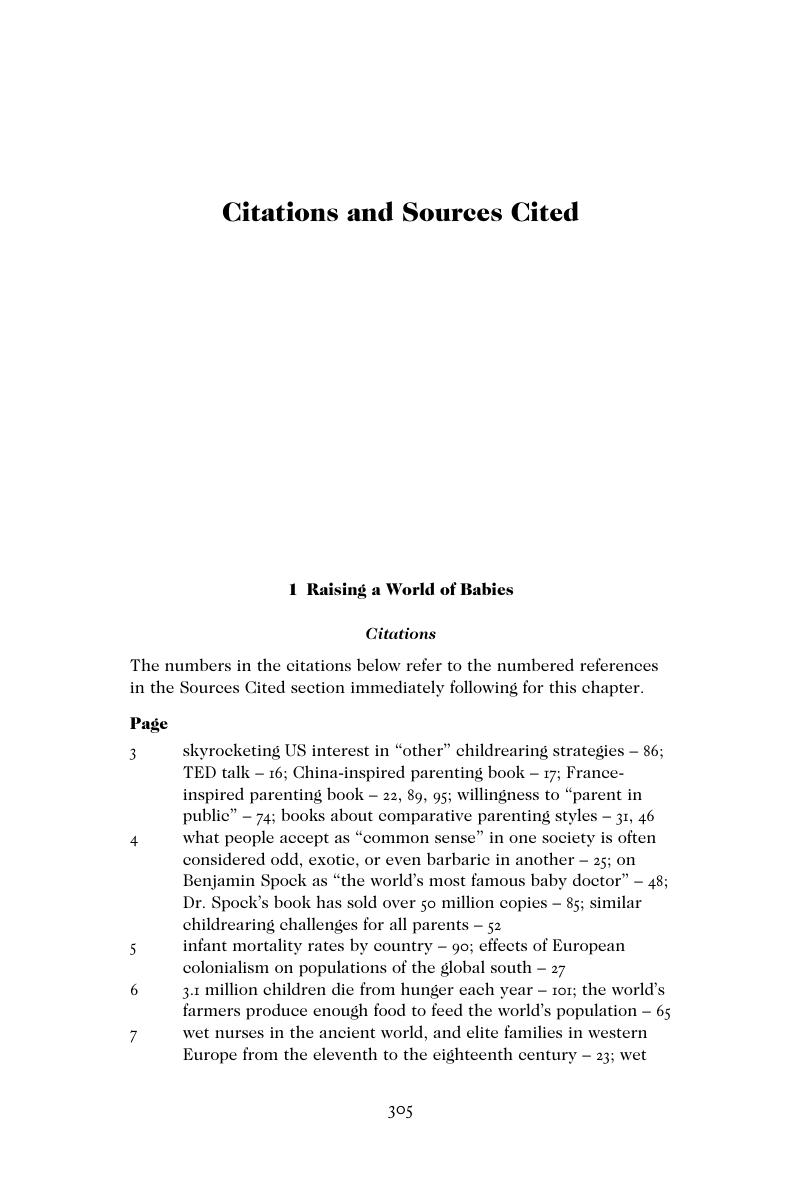Book contents
- Reviews
- A World of BabiesImagined Childcare Guides for Eight SocietiesFully Revised Second Edition
- A World of Babies
- Copyright page
- Dedication
- Contents
- Note to the Reader
- Chapter 1 Raising a World of Babies
- Chapter 2 Never Forget Where You’re From
- Chapter 3 From Cultural Revolution to Childcare Revolution
- Chapter 4 A Baby to Tie You to Place
- Chapter 5 Childrearing in the New Country
- Chapter 6 Luring Your Child into this Life of Troubled Times
- Chapter 7 From Mogadishu to Minneapolis
- Chapter 8 Quechua or Spanish? Farm or School?
- Chapter 9 “Equal Children Play Best”
- About the Contributors
- Book part
- Citations and Sources Cited
- Index
- References
Citations and Sources Cited
Published online by Cambridge University Press: 03 November 2016
- Reviews
- A World of BabiesImagined Childcare Guides for Eight SocietiesFully Revised Second Edition
- A World of Babies
- Copyright page
- Dedication
- Contents
- Note to the Reader
- Chapter 1 Raising a World of Babies
- Chapter 2 Never Forget Where You’re From
- Chapter 3 From Cultural Revolution to Childcare Revolution
- Chapter 4 A Baby to Tie You to Place
- Chapter 5 Childrearing in the New Country
- Chapter 6 Luring Your Child into this Life of Troubled Times
- Chapter 7 From Mogadishu to Minneapolis
- Chapter 8 Quechua or Spanish? Farm or School?
- Chapter 9 “Equal Children Play Best”
- About the Contributors
- Book part
- Citations and Sources Cited
- Index
- References
Summary

- Type
- Chapter
- Information
- A World of BabiesImagined Childcare Guides for Eight Societies, pp. 305 - 352Publisher: Cambridge University PressPrint publication year: 2016



